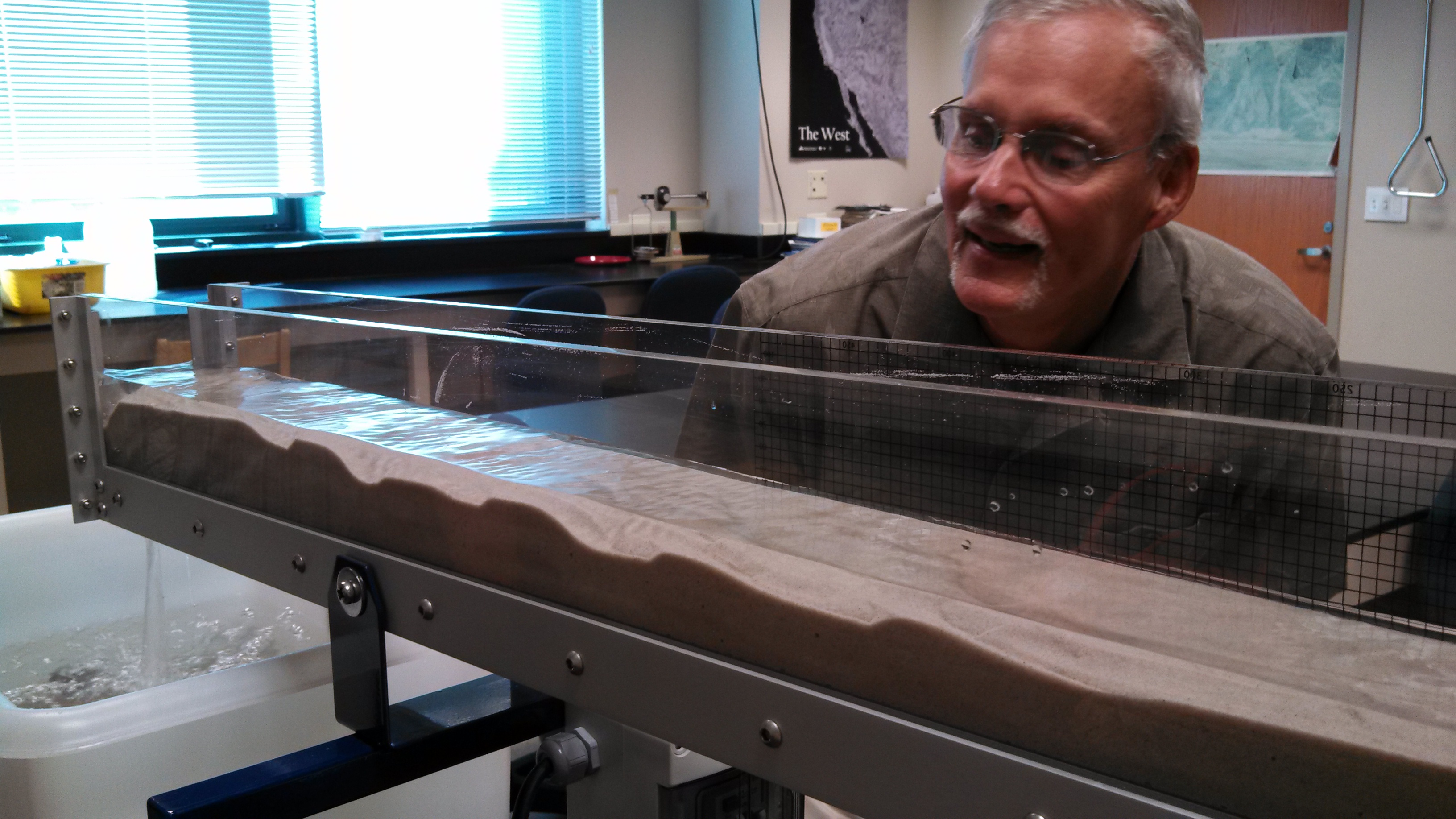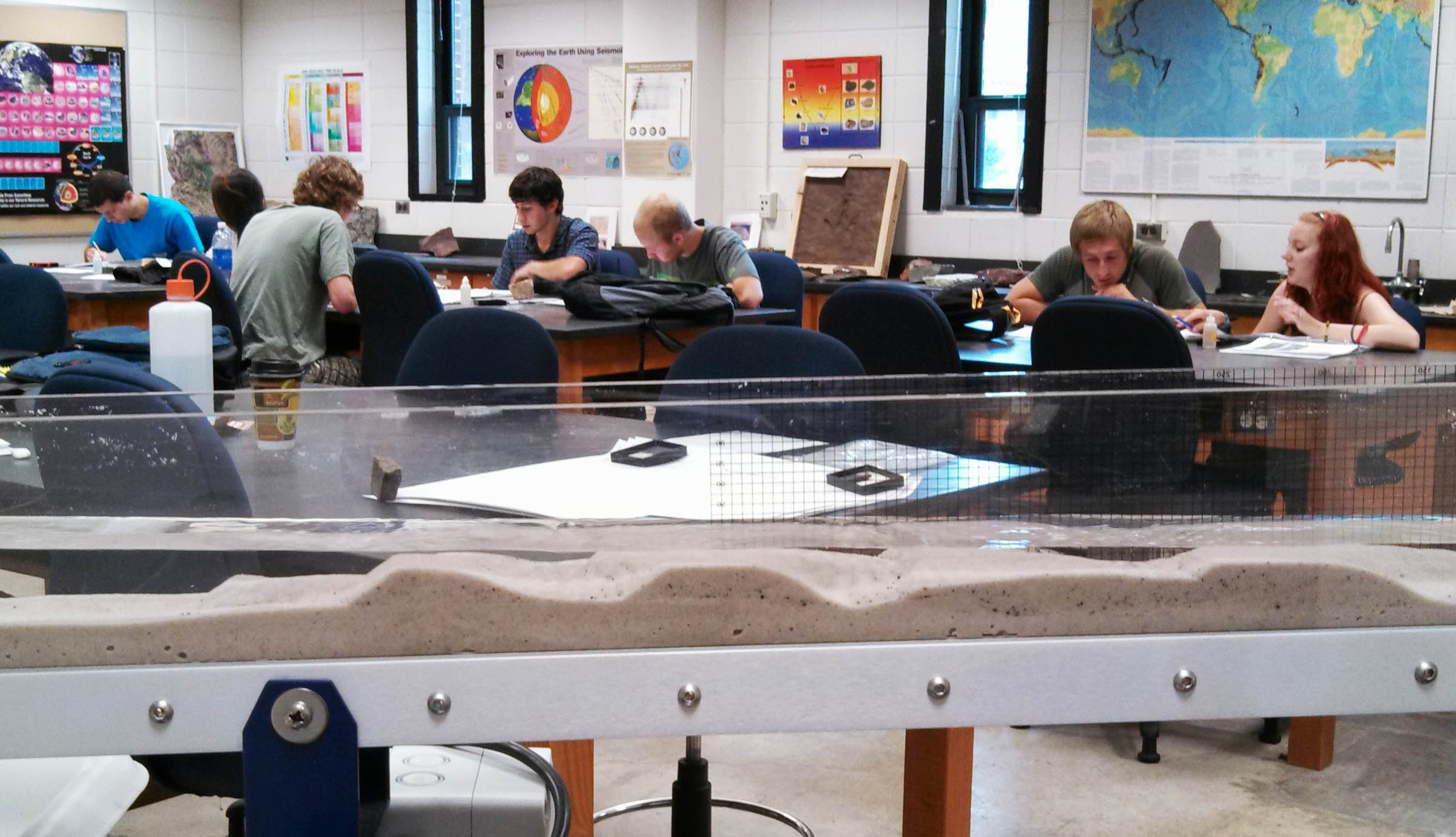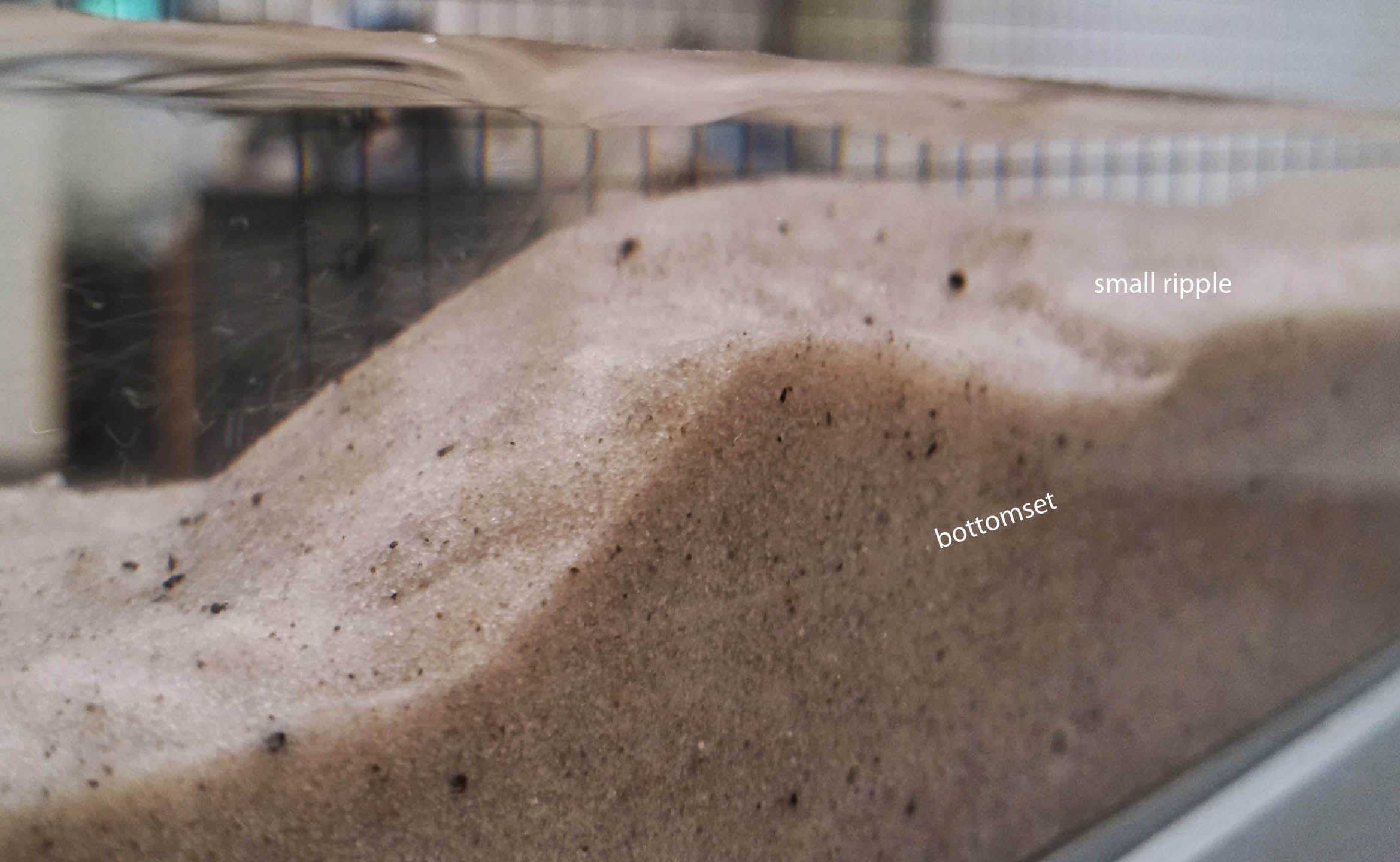


Teaching | Bringing a world of geology to the classroom...
Courses taught since 2005:
All Appalachian State University courses listed above can be found on AsULearn.
Armfield S8 (Sediment Transport Demonstration Channel)
The processes of sediment transport, fluid flow (both surface and ground water), structure creation, and grain deposition are critical to the understanding of sedimentary facies, surface erosion, and groundwater problems. The best mechanisms by which students can observe these processes is either in modern systems or in a laboratory model. Large class sizes in both General Education (>100 students each) and upper level Geology courses (>30 student each) preclude instructors from taking students into the field to observe many modern systems, which can range from mountain river systems, to piedmont alluvial fans, to coastal beaches. In the absence of field data, one of the best ways to test conceptual models of sediment transport and/or fluid flow is through physical modeling. Therefore, the recent acquisition of a sediment transport channel for laboratory modeling allows the faculty to illustrate (hands on) the processes that affect the natural environment.
The sediment transport channel (Armfield model S8) is a long, clear tank that allows the operator to visualize fluid flow, sediment transport, and bedforms in both cross-section and plan view. It is designed to demonstrate topics such as fixed smooth bed flow, flow over a mobile sand bed, the mechanics of sediment transport, depositional features and facies, scour dynamics, flow structures, bedform hysteresis, and many other topics that are critical to the understanding of sediment transport and fluid flow. A laser PIV (particle image velocimeter) system will be attached to the channel to measure fluid velocities at multiple points in a flow. This PIV system is nonintrusive (it does not disrupt the flow during measurement), extremely safe to use, easy to operate, and is as sophisticated as other higher-priced PIV systems. It can record data in video format as well as image and MatLab outputs.
The GLY2250 (Evolution of the Earth) course has already started using the S8 in a lab demonstration on sedimentary structures. As new courses use the S8, we will post images here along with the settings used to create the structures and/or features.
 |
 |
 |
| Good migrating ripples (dunes) with sinusoidal crests. | Using the S8 in class (GLY2250- Evolution of the Earth) to learn about the formation of sedimentary structures. | Oblique view of migrating bedform. The bottomset is clearly visible and there is a small ripple migrating up the back of this dune. |
| 2.5% incline, pump on III, flow valve open, 1-2cm of sand in base of channel | 3.5% incline, pump on III, flow valve open, 3cm of sand in base of channel | 3.5% incline, pump on III, flow valve open, 3cm of sand in base of channel |